|
We are all looking for ways to save money these days, especially those of us with multiple dogs (and cats). While we have tried several types of "over the counter" non-prescription flea medications over the years, we always come back to the same active ingredient, Imidacloprid. The active ingredient Fipronil found in name brand products such as Frontline Plus, Pet Armor, Pet Armor Plus, and Sentry FiproGuard just doesn't seem to work in our geographical location of Michigan. All flea prevention and treatment products (topical or ingestible) are at their core, pesticides. While you can find Imidacloprid and Fipronil "in bulk" as well as in products such as Ortho MAX Tree and Shrub Insect Control Ready To Spray (Imidacloprid 1.47%), I will not be discussing the use of those products here. Imidacloprid Topical Flea MedicationsThe most well known name brand topical flea medications that use Imidacloprid as an active ingredient are K9 Advantix®, K9 Advantix® II, Advantage®, and Advantage® II. The most common of these that you will find in the US today are K9 Advantix® II and Advantage® II, both of which contain a second active ingredient, Pyriproxyfen. Pyriproxyfen is an insect growth regulator that is not found in K9 Advantix® or Advantage®. K9 Advantix® II contains a third active ingredient not found in Advantage® II. Permethrin is an insecticide in the pyrethroid family. Pyrethroids are synthetic chemicals that act like natural extracts from the chrysanthemum flower. Products containing Pyrethroids can kill cats and should never be used on or around cats. Keep dogs treated with topicals such as K9 Advantix® II which contain pyrethroids away from cats for 24 hours after application or opt to use Advantage® II instead. Recommendation: As of 2024, we are currently using Amazon Basics Flea, Tick, & Mosquito Topical Treatment For Dogs. This Amazon Basics product is equivalent to and contains all of the same active ingredients of K9 Advantix® II for Dogs. By purchasing the Amazon Basics product instead of the name brand K9 Advantix® II for Dogs, we are saving $40.00 per 6 dose box purchased. As stated above, keep dogs treated with topicals such as Amazon Basics Flea, Tick, & Mosquito Topical Treatment for Dogs which contain pyrethroids away from cats for 24 hours after application. Splitting DosesWe have covered how we save money purchasing products equivalent to name brands, in this section we will outline how we split doses for our animals. This section is for "informational purposes only" (see Disclaimers for more details) and we disclaim liability for any damages or losses, direct or indirect, that may result from use of or reliance on information contained within the information. Amazon Basics Flea Topical Treatment for CatsFor our cats we are currently using Amazon Basics Flea Topical Treatment for Cats. This Amazon Basics product is equivalent to and contains all of the same active ingredients of Advantage® II for Cats. Advantus® Imidacloprid Oral Flea Medication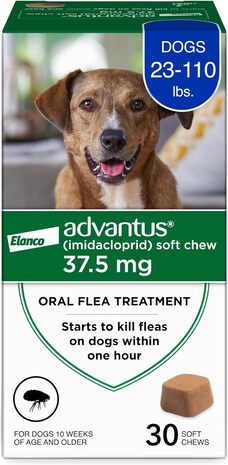 In addition to K9 Advantix®, K9 Advantix® II, Advantage®, and Advantage® II manufacturer Elanco also makes a soft chewable containing Imidacloprid. There are three things that are important to note about this product: 1. Adult fleas must bite the pet to die. 2. This product is only effective for 24 hours but can be given once daily. 3. Advantus® is specifically for dogs and should never be given to a cat. Advantus® is sold in 2 doses based on the dog's body weight: 4-22 Pounds 7.5mg imidacloprid (Amazon $59.98 for 30 chews) - amzn.to/49lln5V 23-110 Pounds 37.5mg imidacloprid (Amazon $59.98 for 30 chews) - amzn.to/4bpYsIv Recommendation: We do not recommend the use of this product based on its overall cost, need to give it once daily, and as well as that Advantus® use has not been studied for breeding, lactating and/or pregnant dogs. Pills with the active ingredient Nitenpyram are a better, more cost effective alternative if a dog or cat is so severely infested with adult fleas that a 24-hour oral medication is desired/needed. Nitenpyram Oral Flea Medication"Your mileage may vary"As with all parasite preventions and treatments, it is important to discuss with your vet what what you are looking to target (fleas, ticks, lice, intestinal worms, etc.) and figure out together what will work in your geographical area. In our area, imidacloprid seems to work well for us, while the active ingredient fipronil seems to do next to nothing for flea treatment. Amazon Basics does offer products labeled as "Flea & Tick Topical for Dogs" and "Flea & Tick Topical for Cats" containing fipronil which are equivalent to Frontline Plus. The box design is deceivingly similar to the products containing imidacloprid and it is important to double check the active ingredients before purchasing to be sure you are getting the ingredients you desire because these are products non-returnable to Amazon. This article only discusses our experiences and how we save money on over the counter non-prescription products; there are also numerous prescription options available through your veterinarian to prevent and treat fleas, ticks, lice, intestinal worms, etc. Disclaimers:The articles which appear on NorwegianBuhundPuppies.com are provided on an “as is” basis and are intended for general consumer understanding and education only. Any access to this information is voluntary and at the sole risk of the user.
Nothing contained in articles and or content is or should be considered, or used as a substitute for, veterinary medical advice, diagnosis or treatment. The information provided on the website is for educational and informational purposes only and is not meant as a substitute for professional advice from a veterinarian or other professional. Articles are designed to educate consumers on veterinary health care and medical issues that may affect their pet’s or animal’s daily lives. This site and its services do not constitute the practice of any veterinary medical or other professional veterinary health care advice, diagnosis or treatment. BlackRose Norwegian Buhunds and NorwegianBuhundPuppies.com disclaims liability for any damages or losses, direct or indirect, that may result from use of or reliance on information contained within the information. BlackRose Norwegian Buhunds and NorwegianBuhundPuppies.com advises consumers to always seek the advice of a veterinarian, veterinary specialist or other qualified veterinary health care provider with any questions regarding a pet’s health or medical conditions. Never disregard, avoid or delay in obtaining medical advice from your veterinarian or other qualified veterinary health care provider because of something you have read on this site. If you have or suspect that your pet has a medical problem or condition, please contact a qualified veterinary health care professional immediately. Your trust is important to us and we would never recommend a company and/or product that we have never used. Amazon affiliate disclosure statement: As an Amazon Associate I earn from qualifying purchases. FTC affiliate disclosure statement: I get commissions for purchases made through links in this post.
0 Comments
Updated: October 28, 2023 Original Article Published: June 11, 2019 Time: Under 3 Hours Cost: $70.00 Materials Used:
Tools Needed:
Directions:
Every year, starting with 2011, the AKC publishes their breed rankings by breed popularity (registration numbers). So where does the Norwegian Buhund stack up? 2022 - Rank 178 / 199 Recognized Breeds (2 New Breeds Recognized in 2022) 2021 - Rank 170 / 197 Recognized Breeds (2 New Breeds Recognized in 2021) 2020 - Rank 168 / 195 Recognized Breeds (2 New Breeds Recognized in 2020) 2019 - Rank 169 / 193 Recognized Breeds (1 New Breed Recognized in 2019) 2018 - Rank 165 / 192 Recognized Breeds (2 New Breeds Recognized in 2018) 2017 - Rank 170 / 190 Recognized Breeds (No New Breeds Recognized in 2017) 2016 - Rank 174 / 190 Recognized Breeds (3 New Breeds Recognized in 2016) 2015 - Rank 165 / 187 Recognized Breeds (7 New Breeds Recognized in 2015) 2014 - Rank 172 / 180 Recognized Breeds (2 New Breeds Recognized in 2014) 2013 - Rank 166 / 178 Recognized Breeds (3 New Breeds Recognized in 2013) 2012 - Rank 163 / 175 Recognized Breeds (2 New Breeds Recognized in 2012) 2011 - Rank 165 / 173 Recognized Breeds (5 New Breeds Recognized in 2011) 2010 - No breed rankings available. 168 Recognized Breeds. (3 New Breeds Recognized in 2010) 2009 - Norwegian Buhund recognized by the AKC along with 5 other breeds that year. No breed rankings available. 165 Recognized Breeds. 2008 - No breed rankings available. 159 Recognized Breeds. Norwegian Buhunds are a very rare spitz breed that is in danger of becoming extinct without preservation breeding.
By request, I am going to discuss my protocols for female adult supplementation. How I define adult is that the dog has had their orthopedic radiographs for elbows and hips taken and now I want to supplement them and prepare them for breeding. Do not use this protocol on puppies or young dogs who have not had their “official” orthopedic radiographs taken after their second birthday with the sole exception being the DHA & EPA supplement on this list.
Disclaimer: This is not a substitute for veterinary advice, please speak with a reproductive veterinarian prior to starting your dog on supplements. Daily Maintenance: DHA & EPA supplement for all dogs - A study done by Canine Companions for Independence found that the supplementation of DHA and EPA during gestation and the perinatal period to weaning does not adversely influence hip joint formation of dogs and benefits cognitive and neurological development as well as eye development. It is also now known that DHA & EPA can reduce inflammation and potentially boost the immune system and it is common to see DHA listed on commercial puppy foods and now senior foods as well for dogs 7 years and older.. This is the one supplement I do give to everyone but that I felt was crucial to mention for breeding females. I want to give my puppies the best start in life that I can and this is helpful to supplement the mother and the puppies throughout life. When I learned this information, the product that I chose to start using is Now Double Strength DHA-500. It contains 500mg of DHA and 250mg of EPA and I give one to each dog with dinner, they eat the capsules themselves although you could cut the capsule open and drizzle the oil on top of your dogs food. CCI Study: https://pubmed.ncbi.nlm.nih.gov/30092106/ Breeding Nutrition Episode From Pure Dog Talk: https://puredogtalk.com/podcast/448-nutrition-recommendations-in-breeding-dogs/ Product: https://amzn.to/37yZSRN So once I have orthopedic radiographs taken, I start my dogs on Doc Roy’s Daily Care Extra Tablets which is a general multivitamin and mineral supplement. I give 2 per dog (this is for dogs 20-50 pounds according to the manufacturers recommendations) at dinnertime. Product: https://amzn.to/3uj0IvP After radiographs I also start my girls on FOLATE (Vitamin B9) - not folic acid (pteroylmonoglutamic acid). Yes, the Doc Roy’s Daily Care Extra has folic acid in it (150mcg per tablet) but here is why I choose to supplement with FOLATE. Folate is the natural and bioavailable form of Folic Acid. Folic Acid is synthetic and manmade and requires the body to convert it from folic acid to folate before use. I have no way of knowing how efficient my dogs livers are at converting the folic acid into bioavailable folate and I feel better making sure I am giving them a supplement their bodies can readily use. Folate is known to support heart health, proper cell growth and the formation of DNA, as well as lower the risk of cancer and birth defects in humans and puppies. The product I use contains 800mcg of folate and I give 1 tablet with dinner. Product: https://amzn.to/3dBORTu Breeding: When a female is close to coming in season and I intend to breed her I add Breeder’s Edge Oxy Mate Prenatal Vitamin for Medium To Large Females (manufactures recommendation is 1 soft chew daily for females 20-60 pounds). This supplement contains additional vitamins, minerals, herbs, and amino acids that are needed for the health of moms and puppies. I supplement with 1 soft chew per day until she gives birth. Product: https://amzn.to/3qKcUDx Whelping: During delivery, when the puppies are on their way, I use Breeder’s Edge Oral Cal Plus in the 30mL syringe. This product is a gel that supports productive labor and contractions with 3 calcium sources, magnesium and MCTs. Follow the manufacturer's directions. Product: https://amzn.to/3pM9dff After whelping is complete: Once the puppies have safely arrived and mom has resumed eating I no longer give Oxy Mate and instead use Breeder’s Edge Oxy Momma Postnatal Vitamin for Medium To Large Females (manufacturer's recommendation is 1 soft chew daily for females 20-60 pounds). This supplement supports lactation and recovery with additional vitamins, minerals, herbs, and amino acids. I give 1 soft chew per day with dinner until the puppies are fully weaned, 1 bottle of 40 soft chews will last me through weaning. Product: https://amzn.to/37E2DBg Check out https://www.revivalanimal.com/ for more information regarding Doc Roy and Breeder’s Edge supplements. This is what I do with my dogs for my supplement protocol. If you have any questions please seek out a Breeder Mentor in your breed AND speak to your reproductive veterinarian. People who are new to purebred dogs simply ask if a puppy they are purchasing is “papered,” often not realizing that within the various registries in the US there are different types of “papers” and registration certificates. The two main registries in the United States that recognize the Norwegian Buhund include the AKC (American Kennel Club) and UKC (United Kennel Club). Each registry offers various types of registration and each has their own benefits, here I will discuss the American Kennel Club’s four most common types of registration – Canine Partners, PAL, Limited Registration, and Full Registration.  Canine Partners is a program that you can use to register a dog with AKC of mixed or unknown heritage whose appearance does not match one of AKC’s recognized breeds. You may also register a breed that AKC does not yet recognize using this option. It is important to note that when you apply for this type of registration you also certify that the dog you are registering is spayed or neutered at the time of registration. This registration allows you to participate and earn titles and certificates in any of AKC’s “all breed” venues except conformation and other breed or group specific venues. Instead of a traditional “Registration Certificate” you will receive a “Certificate Of Enrollment.” The Certificate Of Enrollment is a one page tan colored certificate which features the Canine Partners logo. AKC’s PAL Program, also known as the Purebred Alternative Listing, allows you to register a dog who phenotypically appears to be one of AKC’s recognized breeds. To apply for this form of registration you must submit at least two recent and clear photographs of the dog – one showing the facial characteristics of the dog and one showing a full side profile while the dog is standing. Like the Canine Partners option, this registration type requires that the dog be spayed or neutered at the time of registration and allows the dog and owner to participate together in AKC’s “all breed” venues, except for conformation. The PAL Program adds the benefit of also allowing participation in venues specific to the breed or group to which that dog appears to belong (i.e. Sighthounds can participate in Lure Coursing, Small Terriers and Dachshunds can participate in Earthdog Trials). This registration looks like a traditional registration certificate, taking up about 1/3 of a sheet of paper. It has a red border which states “Purebred Alternative Listing” along the top of the border and it lacks any breeder information. AKC Limited Registration is likely the most common registration someone will come across when purchasing a Norwegian Buhund in the US. This registration is for puppies who are born to parents who both have AKC Full Registration or where one of the parents is located internationally and is registered with an AKC approved registry (such as the Canadian Kennel Club or Norsk Kennel Klub). This type of registration does not require the animal to be spayed or neutered at any time and allows the animal to participate in all AKC venues except for Conformation. If a dog is bred while on Limited Registration the puppies are not able to be registered with the American Kennel Club. The breeder(s) of the dog may at any time pay to upgrade a dog’s registration from Limited to Full. This is useful for breeders who want to keep a close eye on their puppies and have requirements for the owners before they allow the dog to be upgraded to Full Registration such as titles and/or health testing. This registration certificate is about 1/3 of a sheet of paper and is bordered in orange and states “Limited Registration Certificate” along the bottom. In the top right corner is the statement, “offspring of this dog not eligible for registration.” With this registration, the dog can participate in any AKC venue except for Conformation. Full Registration, given out sparingly in most cases, is given to those puppies who will need this type of registration to participate in conformation or is given later in life to adult dogs whom the Breeder has also agreed is worthy to breed. This registration allows the dog and owner “free reign” to participate in any AKC venue that the breed qualifies for. It also allows offspring of the dog to be AKC registered if the mate also has Full AKC Registration or full registration from an AKC accepted registry, such as the Canadian Kennel Club or Norsk Kennel Klub. Breeder’s often increase their requirements and/or co-own when sending a puppy home with Full Registration. This registration certificate is bordered in blue and along the bottom states “Registration Certificate.” All of the registration certificates above will have an issue date as well as the AKC logo but what else might you see on your certificate?  Bred With H.E.A.R.T. – If you see this logo on your AKC registration certificate it means that your Breeder pays a yearly due to participate in AKC’s Bred With H.E.A.R.T. program. Breeders who participate in this program agree to the following principles:
 Breeder Of Merit – If you see this logo on your AKC registration certificate it means your Breeder has applied and been accepted into AKC’s Breeder Of Merit Program. To apply to this program your Breeder had to demonstrate to the AKC that they have met the following requirements:
I sincerely hope that this gives you a better understanding of AKC’s most common registration types and what each type can offer you and your dog.
Invest In High Quality Grooming Tools & They Will Last A Lifetime! Ears
Eyes
Mouth & Teeth
Feet & Nails
Weekly Maintenance Bath For All Norwegian Buhunds
“It Is Show Time!” Bath
General Coat Care
Grooming Table For Nowegian Buhunds (36” or longer)
Vet Ophthalmol. 2017 Sep;20(5):460-467. doi: 10.1111/vop.12449. Epub 2017 Jan 3.
Cataracts in the Norwegian Buhund-current prevalence and characteristics. Kristiansen E1, Revold T2, Lingaas F2, Narfström K3,4, Pedersen PB5, Kielland C2, Dahl S1, Ropstad EO2. Author information 1 Hønefoss Dyrehospital, Hønefoss, Norway. 2 Department of Companion Animal Clinical Sciences, Norwegian University of Life Sciences, Oslo, Norway. 3 College of Veterinary Medicine, University of Missouri, Colombia, MO, USA. 4 RetVet KB, Vaxholm, Sweden. 5 Dyrenes Laege og Oegenklinik, Rødkaersbro, Denmark. Abstract OBJECTIVE: To evaluate prevalence and characteristics of cataracts in the Norwegian Buhund breed 20 years after high reported prevalence of especially pulverulent nuclear cataracts (PNCs). ANIMALS STUDIED: Two hundred and fifty Norwegian Buhund dogs in Norway, Sweden, and Denmark (117 males and 133 females) with previously unknown eye health status were included. Forty-five dogs had multiple examinations (two to six times over a 6-year period). Median age was 4.4 years [0.2-15.2] at first examination and 5.3 years [0.2-15.2] at last examination. PROCEDURES: All dogs underwent regular screening for inherited eye diseases. RESULTS: At the last observation of each dog, 52.4% were affected by PNC, categorized as minimal (33 of 250 dogs; 13.2%), mild (31 dogs; 12.4%), moderate (38 dogs; 15.2%), or pronounced (29 dogs; 11.6%). Moderate or pronounced changes were only seen in older dogs, and progressive changes were identified in some of the re-examined dogs. Some dogs, free of lenticular changes at early examinations, were affected by PNC at re-examinations. The odds for finding PNC increased with dog's age up to approximately 8 years. Presumably inherited cataracts other than PNC were found in 53 dogs (21.2%) with cortical (17.6%) and posterior polar (6.4%) locations as the most common ones. CONCLUSIONS: The high prevalence of PNC in the breed reported 20 years ago persists. PNCs are not always visible in young dogs, and the rate of progression varies. The prevalence of other types of cataract is also high, but cataracts rarely cause loss of vision in this breed. © 2017 American College of Veterinary Ophthalmologists. KEYWORDS: Norwegian Buhund; cataract; dog; eye; pulverulent nuclear cataract PMID: 28044393 DOI: 10.1111/vop.12449 [Indexed for MEDLINE] https://www.ncbi.nlm.nih.gov/pubmed/28044393 These are Veterinary Recommendations based on what we recommend that Veterinarian/Clinic for. Each Veterinarian/Clinic may also offer general care to all dogs, or only specialty care.
There may also be more than one Veterinarian working in these clinics. Make sure you are specifically asking for appointments with the Veterinarian recommended if there is one named! General Care Dr. Matt Januszewski, DVM, CVA, CVSMT Integrative Veterinary Services 1122 S. Michigan Avenue Howell, MI 48843 Phone: 517.292.8880 Web: IntegrativeVeterinaryServices.com Dr. Lucretia Greear DVM, CVA Woodhaven Animal Hospital 20376 Van Horn Road Woodhaven, MI 48183 Phone: 734.561.3795 Web: WoodhavenAnimalHospital.com 24-Hour Emergency, Critical Care & Specialists Michigan State University College Of Veterinary Medicine - Veterinary Medical Center Small Animal Clinic: 736 Wilson Rd, East Lansing, MI 48824 Small Animal Phone: 517.353.5420 24-Hour Emergency & Critical Care Only Wilson Veterinary Hospital – “West” (Wilson’s Emergency Clinic) 12000 Durham Road Washington Township, MI 48095 Phone: 586.752.6217 Web: wilsonvethospital.com Veterinary Ophthalmologist (Eyes) Dr. David Ramsey, DVM, Diplomate, ACVO The Animal Ophthalmology Center 1300 West Grand River Avenue Williamston, MI 48895 Phone: 517.655.2777 Web: Eye-Vet.com Reproductive Veterinarian, OFA & PennHIP Testing Dr. William E. Schultz, DVM Schultz Veterinary Clinic 2770 Bennett Road Okemos, MI 48864 Phone: 517.337.4800 Web: SchultzVetClinic.com Wilson Vet Hospital – “East” (Wilson’s General Practice Clinic) 67989 Van Dyke Road Washington Township, MI 48095 Phone: 586.752.6217 Web: wilsonvethospital.com OFA & PennHIP Testing Only Dr. Lonnie L. Davis DVM, DABVP – “Wrote the book, so to speak, on how to take hip x-rays for joint evaluation” using his Precise Positioning Technique™. There is a lot of information and free articles on his websites about his Precise Positioning Technique™. Troy Animal Hospital & Bird Clinic 34 South Weston Road Troy, Ohio 45373 Phone: 937.500.0490 Web: troyanimalhospital.com “Dr. Amanda” Heritage Animal Hospital 150 Waterstradt-Commerce Drive Dundee, MI 48131 Phone: 734.529.9177 Web: hahvet.com Canine Physical Conditioning & Rehabilitation Blue Waves Canine Hydro Conditioning & Spa - Owned By Yuval & Cheryl Gelbert (Formerly Known As “Hydrodogs”) 6400 Layton Road Fowlerville, MI 48836 Phone: 517.715.3062 No Website, Search For Them On Facebook North Macomb Canine Rehabilitation and Conditioning (A Division Of Wilson Veterinary Hospital) 12000 Durham Road Washington Township, MI 48095 Phone: 586.322.4454 Rehab-Specific Website: northmacombk9rehab.com Veterinary Hospital Website: wilsonvethospital.com Ruffwear Front Range Harness The Ruffwear Front Range Harness is an everyday harness that is easy to put on and is comfortable for dogs to wear with a Y-Shaped fit and brush guard design to protect the chest and belly. This harness features 4 points of size adjustment and two points of attachment for leashes (reinforced webbing loop on the chest and aluminum V-ring on the back). If you have a dog who is a strong puller, the front attachment does a good job of staying on center when the harness is properly fit without gapping and does not restrict shoulder and front range movement unlike "no-pull harnesses" which can damage skeletal structure causing injury and chronic pain. Available in 6 Colors
Available in 5 Sizes
Cost $39.95 https://amzn.to/2Cgtch3 Matching Leash - Similar Harness -  Ruffwear Hi & Light Harness Ruffwear Hi & Light Harness If you have a dog smaller than an XXSmall, a similar harness is the Ruffwear Hi & Light Harness which comes in an XXXSmall. This harness is lighter in weight and does not offer the strength that the Front Range does nor the reinforced webbing loop on the chest. https://amzn.to/2CPMBqa Eezwalker Harness The Eezwalker harness contours to a dog's body shape and features a Y-Shape design. This harness provides freedom of movement and allows shoulders and legs to extend and reach. This harness features back leash attachment and an adjustable girth strap. The big advantage of this harness is that it is lined with fleece offering a comfortable fit without rubbing. These are great harnesses for puppies and dogs who don't pull. They can also be used for sports where pulling may be encouraged such as tracking and nosework (scent work) where the dog takes charge in leading the handler to the source of the odor. Eezwalker is also known for being a choice harness for activities such as jogging, no-pressure dog walking, puppy training, flyball, Frisbee / disc dog, barn hunt, biking, and agility. Available in 7 Colors
Available in 6 Sizes
Cost $32.95 -$44.95 (size dependent) https://amzn.to/2CM1VUC Matching Leashes - Matching Collar - Other Matching Accessories -
Dodds Minimal Vaccination Protocol 2016 DODDS VACCINATION PROTOCOL FOR DOGS (Newest Protocol) Posted July 18, 2016 The following vaccine protocol is offered for those dogs where minimal vaccinations are advisable or desirable. The schedule is one I recommend and should not be interpreted to mean that other protocols recommended by a veterinarian would be less satisfactory. It’s a matter of professional judgment and choice. 9 - 10 weeks of age Distemper + Parvovirus, Modified Live Vaccine e.g. Merck Nobivac (Intervet Progard) Puppy DPV 14 – 15 weeks of age Distemper + Parvovirus, Modified Live Vaccine 18 weeks of age Parvovirus only, Modified Live Vaccine Note: New research states that last puppy parvovirus vaccine should be at 18 weeks old. 20 weeks or older, if allowable by law Rabies – give 3-4 weeks apart from other vaccines Mercury-free (thimerosol-free, TF) 1 year old Distemper + Parvovirus, Modified Live Vaccine This is an optional booster or titer. If the client intends not to booster after this optional booster or intends to retest titers in another three years, this optional booster at puberty is wise. 1 year old Rabies – give 3-4 weeks apart from other vaccines 3-year product if allowable by law; Mercury-free (thimerosol-free, TF) Perform vaccine antibody titers for distemper and parvovirus every three years thereafter, or more often, if desired. Vaccinate for rabies virus according to the law, except where circumstances indicate that a written waiver needs to be obtained from the primary care veterinarian. In that case, a rabies antibody titer can also be performed to accompany the waiver request. Visit The Rabies Challenge Fund at https://www.rabieschallengefund.org/ for more information. W. Jean Dodds, DVM Hemopet / NutriScan 11561 Salinaz Avenue Garden Grove, CA 92843 https://drjeandoddspethealthresource.tumblr.com/post/147595920886/dodds-vaccination-protocol-dogs-2016#.W7MDD3tKjIV How does the Dodds Minimal Vaccination Protocol compare to the newest recommendations from the American Animal Hospital Association (AAHA)? 2017 AAHA Canine CORE Vaccination Guidelines Published September 7, 2017
The most significant change AAHA has made is on its position on antibody titer testing. It is an admission by AAHA that titer testing is an alternative to vaccination - "Titers, or quantitative antibody testing, can help determine your dog’s protection from some diseases. Titer testing can be useful when a dog’s vaccination history for distemper, adenovirus, and parvovirus is unknown—a positive result typically means he is considered protected." Dr. Jean Dodds on Adenovirus - "At the current time, I do not recommend routinely giving the adenovirus (CAV-2) vaccination for either infectious canine hepatitis (ICH) or kennel cough. In the United States, there has only been one documented and isolated domesticated dog ICH incident in the past fifteen years. If and when a true outbreak does happen, my vaccination protocol can be revised appropriately to include CAV-2 vaccination to cover ICH for a specific region." Dr. Jean Dodds on Parainfluenza - "Parainfluenza is simply a member of the kennel cough complex. By itself, canine parainfluenza produces mild to moderate upper respiratory disease or no discernable clinical disease. When parainfluenza virus is combined with a bacterium such as Bordetella and several other potential viral pathogens, kennel cough could result. So, the attempt to pin down canine parainfluenza to specific respiratory lesions is difficult within the kennel cough complex. The current oral or intranasal Bordetella vaccines also cross protect against the other organisms in the kennel cough complex, including the CAV-2, discussed above. Plus, the vaccine needs to be reevaluated and be subjected to new clinical trials. The last one was conducted in the early 2000’s." Note: The American Animal Hospital Association (AAHA) sets the gold standard for vaccination protocols for veterinarians. If your veterinarian is still recommending boosters every year or every other year or if they are pushing other vaccines that are not needed for your location - FIND A NEW VETERINARIAN! The 2017 AAHA Guidelines specify that subsequent vaccinations to the core vaccines should be administered at intervals of 3 yr or longer and that quantitative antibody testing (titer testing) is useful for assessing a dog's protection from disease. How long do canine vaccines last? Is revaccination every 3 years even necessary? (Duration Of Immunity & Over-Vaccination) When it comes to immunity and duration of immunity for dog vaccines, there’s one clear expert - Veterinary Immunologist Dr. Ronald D Schultz. Minimum Duration Of Immunity For Canine Vaccines Canine Distemper Virus (CDV) Rockbom Strain - 7 Years by Challenge / 15 Years by Serology Canine Distemper Virus (CDV) Onderstepoort Strain - 5 Years by Challenge / 9 Years by Serology Canine Parvovirus (CPV) - 7 Years by Challenge and Serology Canine Adenovirus-2 (CAV-2) - 7 Years by Challenge / 9 Years by Serology Dr Ronald Schultz realized that when dogs were exposed to viruses naturally, they developed lifetime immunity and he began testing the core vaccines (distemper, parvovirus, adenovirus and rabies). Dr. Schultz found that all core vaccines (distemper, parvovirus, adenovirus and rabies) last at least 7 years (which was the duration of the studies, not the duration of immunity for the vaccines). Dr. Schultz says about revaccination, "The patient receives no benefit and may be placed at serious risk when an unnecessary vaccine is given. Few or no scientific studies have demonstrated a need for cats or dogs to be revaccinated.” Dr. Schultz has done a number of interviews with Dr. Karen Becker which can be found on the Mercola Healthy Pets website and youtube channel. Here is my recommended interview to start with ( May 2011) - Entire video without accompanying articles Dr. Karen Becker and Dr. Ronald Schultz on Pet Vaccines - https://www.youtube.com/watch?v=CrLD1NXIa5U Video broken into 4 parts with accompanying articles Dr. Karen Becker Interviews Dr. Schultz (Part 1 of 4) - https://healthypets.mercola.com/sites/healthypets/archive/2011/05/31/what-your-vet-didnt-tell-you-about-all-those-puppy-and-kitty-vaccines.aspx Dr. Karen Becker Interviews Dr. Schultz (Part 2 of 4) - https://healthypets.mercola.com/sites/healthypets/archive/2011/06/07/alternative-to-revaccinating-your-pets-annually.aspx Dr. Karen Becker Interviews Dr. Schultz (Part 3 of 4) - https://healthypets.mercola.com/sites/healthypets/archive/2011/06/14/unraveling-the-pet-vaccine-tangle--what-to-know-about-rabies-vaccine.aspx Dr. Karen Becker Interviews Dr. Schultz (Part 4 of 4) - https://healthypets.mercola.com/sites/healthypets/archive/2011/06/21/expert-proof-most-pets-are-vaccinated-way-too-often.aspx Here is my second recommended interview to (November 2013) - Dr. Becker Interviews Dr. Schultz About Vaccines (Part 1 of 2) - https://healthypets.mercola.com/sites/healthypets/archive/2013/11/06/veterinary-vaccines.aspx Dr. Becker Interviews Dr. Schultz About Vaccines (Part 2 of 2) - https://healthypets.mercola.com/sites/healthypets/archive/2013/11/08/rattlesnake-vaccine.aspx Dr. Becker and Dr. Robb Discuss Over-Vaccination of Pets - https://www.youtube.com/watch?v=ETpOIriQ4Tc Dr. Robb's FULL Testimony to Amend the Rabies Law (includes discussion of dosages and titers) - https://www.youtube.com/watch?v=k44JvhUDW2Y The Rabies Challenge Fund Charitable Trust will determine the duration of immunity conveyed by rabies vaccines. The goal is to extend the required interval for rabies boosters to 5 and then to 7 years. https://www.rabieschallengefund.org/ Where can I get a titer to see if my dog has immunity? Proactive and Integrative Wellness Veterinarian Dr. John Robb at Protect the Pets (Kansas State University) is offering blood antibody titers for Distemper, Parvovirus, Adenovirus, and Rabies all together for $75.00 at the time of this writing (October 1, 2018).
Please visit http://www.protectthepets.com/order-a-titer.html for more information. |
AuthorArchives
February 2024
Categories |







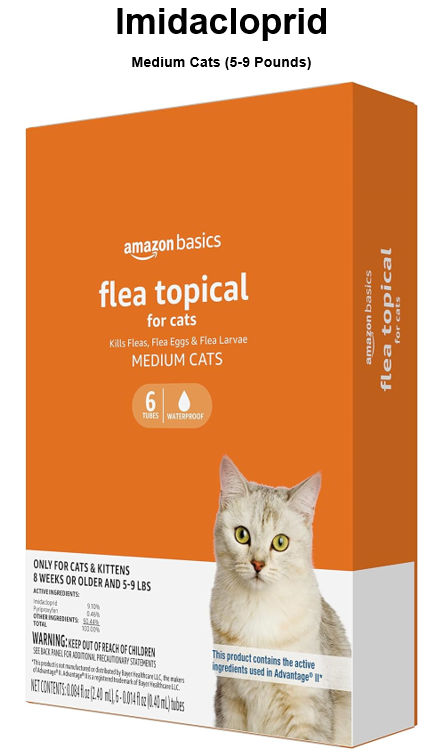
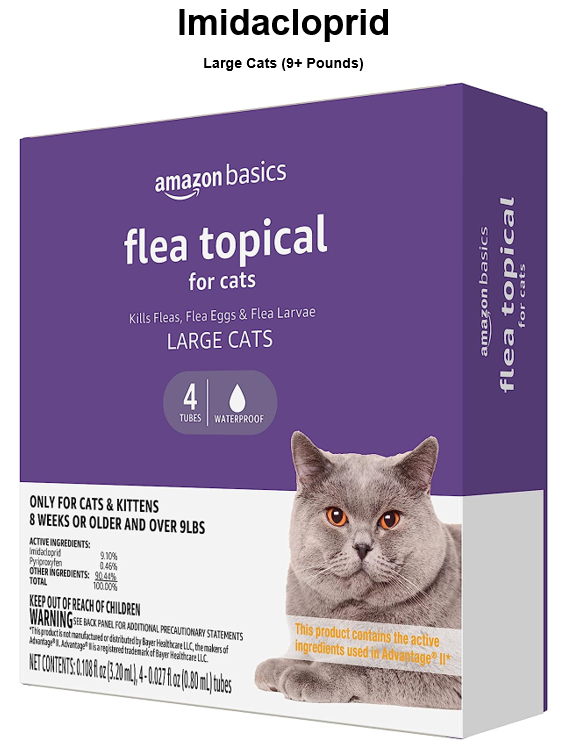




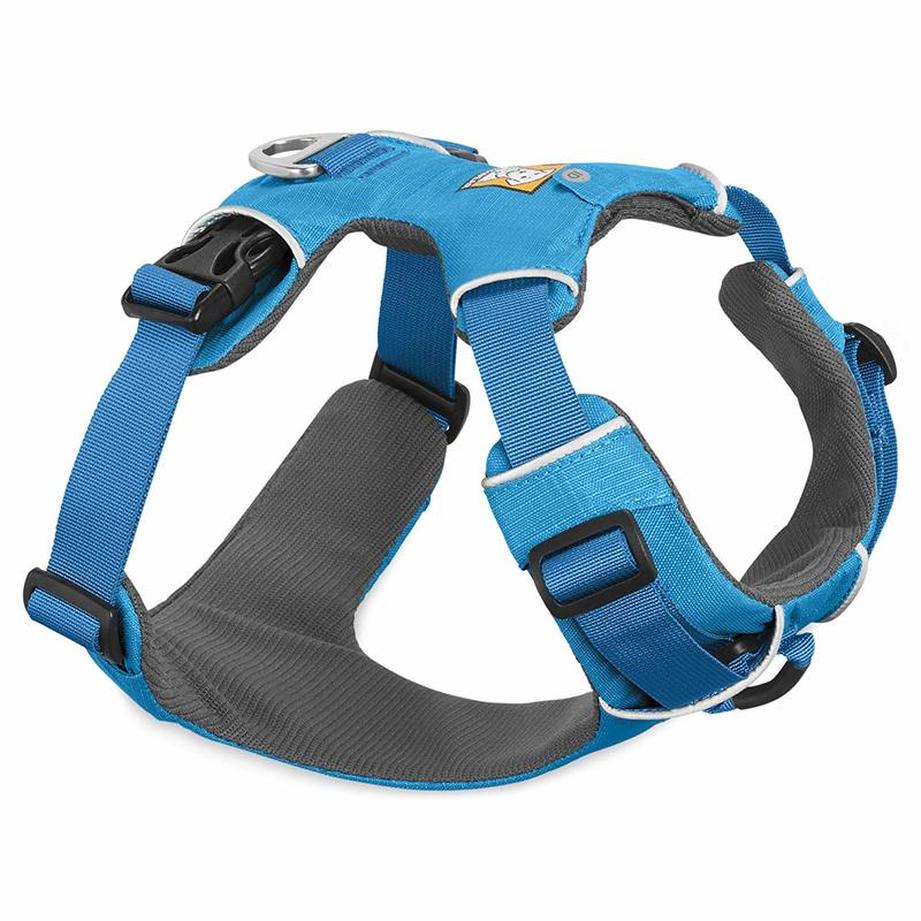





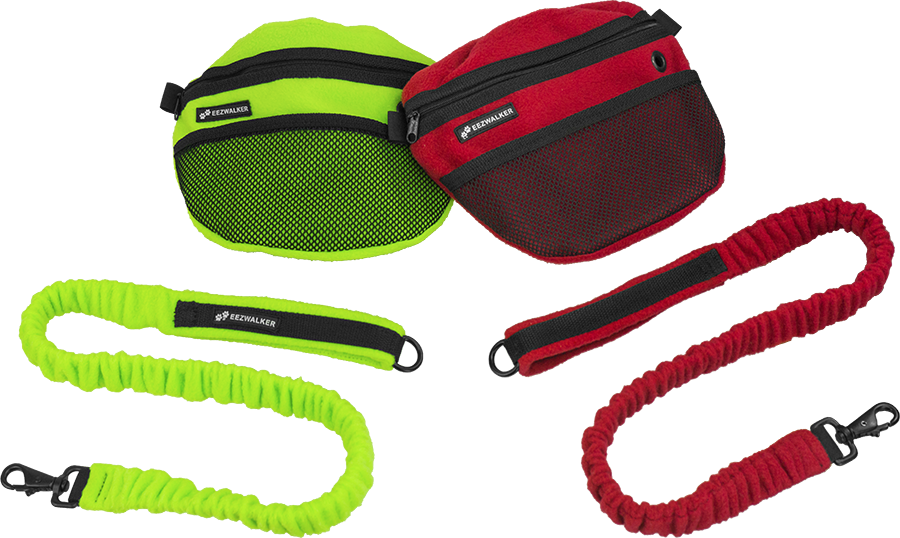
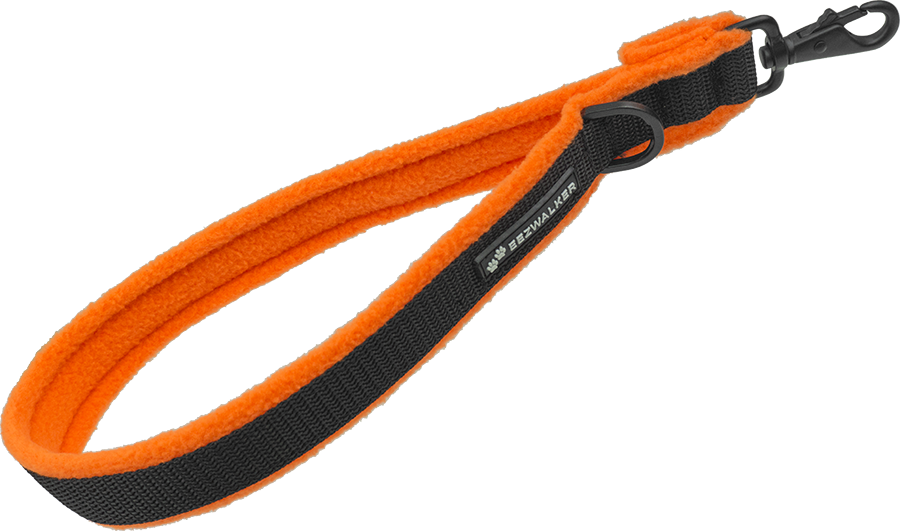
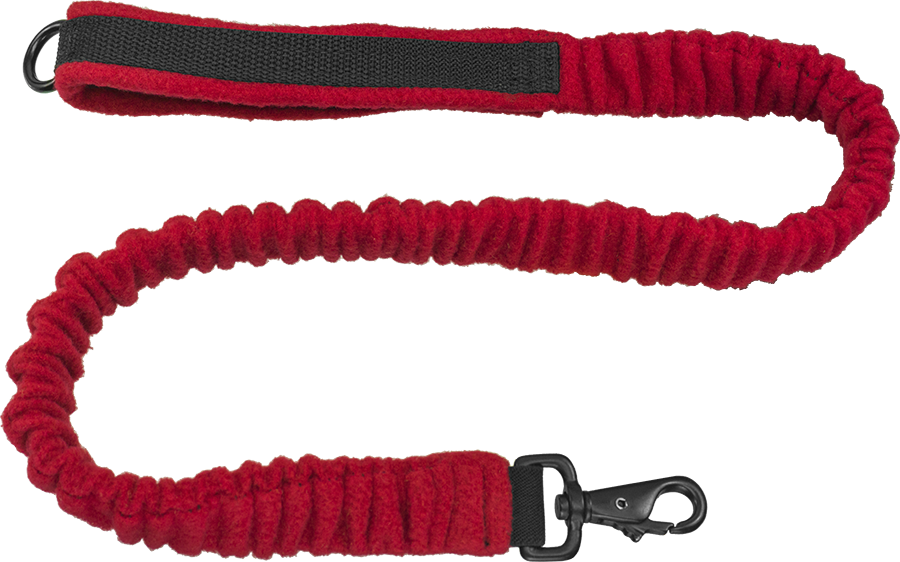


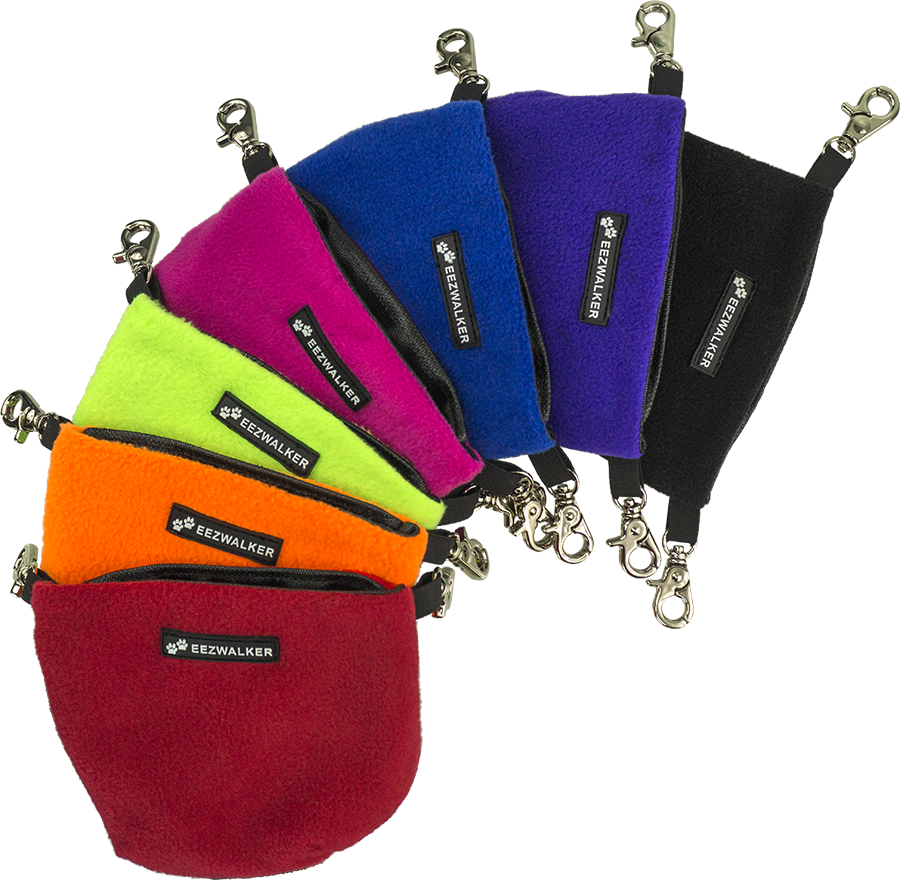

 RSS Feed
RSS Feed





